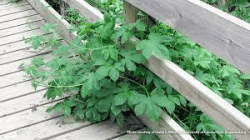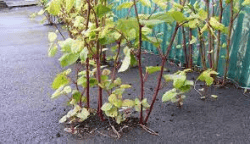Invasive plant species can affect native plants, animals and ecosystems in a variety of ways. Invasive plants may cause problems for native species within an ecosystem. Their presence in a region may affect the food chain by competing for resources. Invasive species can also cause disease, inhibit reproduction, and kill young. These invasive species can also cause a number of problems for native wildlife, including the extinction of many bird and mammal species. Fortunately, there are many ways to control the spread of invasive plants.
Invasive plant species may also disrupt native ecosystems and reduce biodiversity. These invasive species may change the composition of native plants. Invasive plants have altered the climate of many ecosystems, causing large scale wildfires in the Western U.S. grasslands and clogging important waterways. If you suspect the presence of invasive species in your garden, consult with a Dorset Tree Surgeon such as Kieran Boyland, a leading Dorset Tree Surgeon
Invasive plants also alter recreational activities. Some invasive species obstruct the growth of native plants and wildlife, so hunters and hikers are unable to use their favourite areas. A dense buckthorn bush can cover an area once covered with open trees. Native plants play a vital role in attracting and sustaining wildlife. An invasive species may also displace native species that are essential for fish and wildlife.
Invasive plants are nonnative plants that spread quickly into new regions and localised natural habitats. They can also cause economic and ecological damage, which is why billions are spent each year on their mitigation. Invasive plants can cause billions in damage. Invasive plants cause more than just aesthetic problems – they can also cause disease, reducing crop production, and destroying wildlife.
Invasive plant species cause ecosystems to become unstable, affecting crops and livestock. The best approach to controlling invasive species is prevention. Once species spread unchecked, they are hard to eradicate. The cost of eradication depends on the size of the invasive plant population and the risk of spread. Volunteer work parties are also organised to remove invasive plants and restore native vegetation. So, the answer is, what can be done to control the spread of invasive plant species?
Invasive plant species can destroy ecosystems and ecosystem services. Water hyacinth is an example of a common invasive plant species. This plant is native to South America, but has spread to many parts of the world. It clogs up lakes and prevents native species from growing. In Uganda, water hyacinth choked out native fish by growing so thick that sunlight was not able to reach the lake. In turn, fish were unable to feed or reproduce, and the water hyacinth was a significant cause for a large loss of wildlife.


